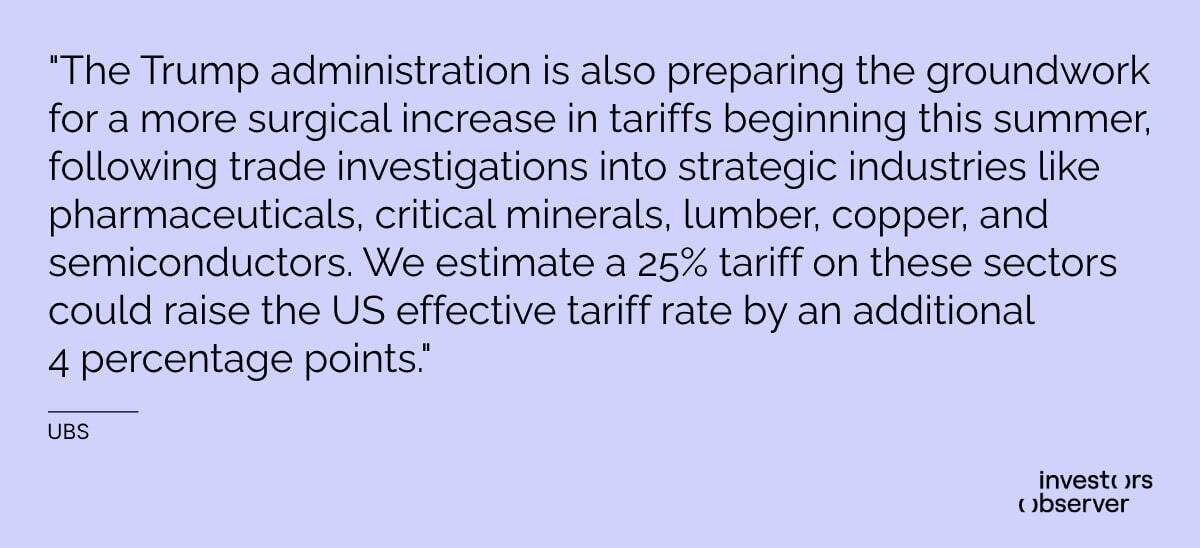
Stocks rallied on May 12 after the U.S. and China agreed to pause most tariffs for 90 days. Wall Street cheered the truce as a sign that the worst of the trade war might be behind.
But according to UBS, that optimism may be premature. The real economic fallout — especially for businesses and consumers, no markets — hasn’t started yet.
In a recent note, UBS Global Wealth Management’s regional CIO Kelvin Tay said that while the truce soothed Wall Street, the actual strain on manufacturers and consumers is only just beginning to build.
At the start of 2025, the effective U.S. tariff rate was around 2.5%. Even with the temporary truce in place, that rate has now jumped to 15%, according to Tay.
“If you're talking about the impact of the trade war in terms of the economy, then certainly we have not even seen the start of that happening,” he said.
Many U.S. companies had stocked up on inventory ahead of the April tariff hikes, but UBS says those buffers won’t last.
As stockpiles run low and replacement goods come in at higher cost, inflation could spiral out of control at a time when consumers are already stretched thin.

Next round of tariffs could hit strategic sectors
While the current truce gives room for further negotiations, UBS doesn’t expect Washington to back off tariffs entirely.
Instead, they think, the Trump administration is preparing to roll out a more targeted round of tariff hikes this summer.
These new tariffs are expected to hit high-stakes industries like pharmaceuticals, critical minerals, lumber, copper, and semiconductors. According to UBS, a 25% levy on these sectors would lift the effective tariff rate by another four percentage points.
Unlike earlier rounds, which included carveouts and exemptions for allies, these are expected to be more permanent and less forgiving.
UBS also sees fewer “headline risks” from here, meaning the market may be less reactive to policy announcements — but that doesn’t mean volatility is over.
“The range of potential outcomes for U.S. tariffs is likely narrower than the moves that buffeted financial markets over the past several weeks,” the firm noted. “But volatility will continue to remain high.”
Diversify away from the dollar
Tay advises investors to prepare for a slower U.S. economy and stickier inflation by reducing exposure to the dollar and diversifying abroad.
He suggested looking at the Swiss franc (CHF), euro (EUR), Australian dollar (AUD), and Singapore dollar (SGD), currencies that may hold up better if the U.S. slows down.
Tay also recommended shifting allocations away from U.S. equities into macro hedge funds and private market assets.
“One thing we know for sure is going to happen,” he said. “Volatility is here to stay.”
Your email address will not be published. Required fields are markedmarked